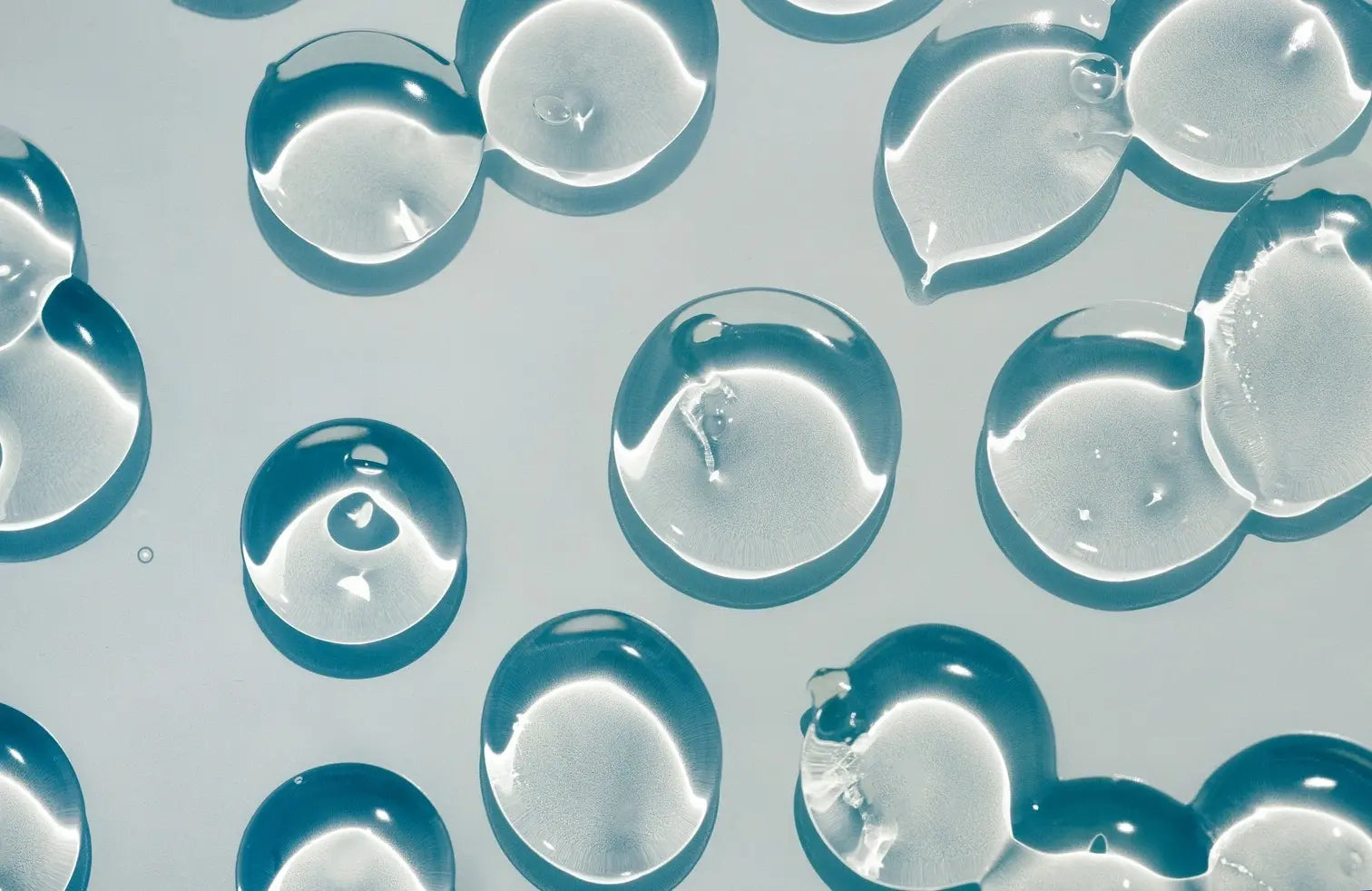What is hyaluronic acid?
- Low molecular weight: Below 350 kDA, hyaluronic acid with a low molecular weight permeates deep into the skin to stimulate collagen synthesis and stem cell maintenance. [9]
- Medium molecular weight: At an average of 680 kDA, medium molecular weights strengthen and fill out the skin by maintaining elastin production [9]
- High molecular weight: A size greater than 1800 kDa is considered to have a high molecular weight which is made up of cross-linked hyaluronic acid used to form a film on the skin that retains moisture over time. [9]
What is hyaluronic acid?
- Low molecular weight: Below 350 kDA, hyaluronic acid with a low molecular weight permeates deep into the skin to stimulate collagen synthesis and stem cell maintenance. [9]
- Medium molecular weight: At an average of 680 kDA, medium molecular weights strengthen and fill out the skin by maintaining elastin production [9]
- High molecular weight: A size greater than 1800 kDa is considered to have a high molecular weight which is made up of cross-linked hyaluronic acid used to form a film on the skin that retains moisture over time. [9]
When should you use hyaluronic acid?
When should you use hyaluronic acid?
Is it okay to use hyaluronic acid every day?
Is it okay to use hyaluronic acid every day?
Does hyaluronic acid remove dark spots?
Does hyaluronic acid remove dark spots?
Does hyaluronic acid brighten skin?
Does hyaluronic acid brighten skin?
What is better, retinol or hyaluronic acid?
What is better, retinol or hyaluronic acid?
What skin type is hyaluronic acid best for?
What skin type is hyaluronic acid best for?
Who should use hyaluronic acid?
Who should use hyaluronic acid?
How does OneSkin use hyaluronic acid?
- High molecular weight: Made from cross-linked hyaluronic acid with high water-binding capability, this size of hyaluronic acid forms a barrier on the skin that locks in moisture.
- Medium molecular weight: Of similar size to the naturally occurring hyaluronic acid in skin, this size strengthens and fills out the skin by maintaining elastin production.
- Low molecular weight: The smallest size permeates deep into the skin to stimulate collagen synthesis and stem cell maintenance.
How does OneSkin use hyaluronic acid?
- High molecular weight: Made from cross-linked hyaluronic acid with high water-binding capability, this size of hyaluronic acid forms a barrier on the skin that locks in moisture.
- Medium molecular weight: Of similar size to the naturally occurring hyaluronic acid in skin, this size strengthens and fills out the skin by maintaining elastin production.
- Low molecular weight: The smallest size permeates deep into the skin to stimulate collagen synthesis and stem cell maintenance.
- Hyaluronic acid is naturally found in the body and responsible for much of the underlying structure of the skin.
- Hyaluronic acid is a humectant, a compound with great water retention properties.
- Hyaluronic acid can be used twice a day, ideally while the skin is still damp after cleansing.
- Hyaluronic acid can be used daily as it is non-irritating and non-comedogenic.
- Hyaluronic acid may reduce the appearance of hyper-pigmentation by boosting collagen synthesis.
- Hyaluronic acid can promote skin elasticity and repair by boosting elastin and collagen production.
- Hyaluronic acid can be used with retinol to offset retinol’s potential irritating side effects.
- Hyaluronic acid is best suited to those with dry skin, however, any skin type will benefit from its use.
- Hyaluronic acid is naturally found in the body and responsible for much of the underlying structure of the skin.
- Hyaluronic acid is a humectant, a compound with great water retention properties.
- Hyaluronic acid can be used twice a day, ideally while the skin is still damp after cleansing.
- Hyaluronic acid can be used daily as it is non-irritating and non-comedogenic.
- Hyaluronic acid may reduce the appearance of hyper-pigmentation by boosting collagen synthesis.
- Hyaluronic acid can promote skin elasticity and repair by boosting elastin and collagen production.
- Hyaluronic acid can be used with retinol to offset retinol’s potential irritating side effects.
- Hyaluronic acid is best suited to those with dry skin, however, any skin type will benefit from its use.
- https://www.sciencedirect.com/topics/medicine-and-dentistry/humectant
- https://www.lorealparisusa.com/beauty-magazine/skin-care/skin-care-essentials/best-times-to-apply-moisturizer
- https://www.healthline.com/health/beauty-skin-care/how-to-use-hyaluronic-acid#in-your-routine
- http://barefacedtruth.com/2015/03/31/hyaluronic-acid-yes-size-does-matter/
- https://www.ncbi.nlm.nih.gov/pmc/articles/PMC4822517/
- https://www.lorealparisusa.com/beauty-magazine/skin-care/anti-aging/4-ways-retinol-can-help-improve-the-look-of-your-skin
- https://pubmed.ncbi.nlm.nih.gov/14976384/
- https://www.ncbi.nlm.nih.gov/pmc/articles/PMC4025519/
- https://www.ncbi.nlm.nih.gov/pmc/articles/PMC7464276/
- Based on data from clinical studies and/or lab studies conducted on human skin samples, 3D skin models, and skin cells in the OneSkin lab. Explore more at oneskin.co/claims
- https://www.nature.com/articles/s41514-023-00109-1
- https://www.sciencedirect.com/topics/medicine-and-dentistry/humectant
- https://www.lorealparisusa.com/beauty-magazine/skin-care/skin-care-essentials/best-times-to-apply-moisturizer
- https://www.healthline.com/health/beauty-skin-care/how-to-use-hyaluronic-acid#in-your-routine
- http://barefacedtruth.com/2015/03/31/hyaluronic-acid-yes-size-does-matter/
- https://www.ncbi.nlm.nih.gov/pmc/articles/PMC4822517/
- https://www.lorealparisusa.com/beauty-magazine/skin-care/anti-aging/4-ways-retinol-can-help-improve-the-look-of-your-skin
- https://pubmed.ncbi.nlm.nih.gov/14976384/
- https://www.ncbi.nlm.nih.gov/pmc/articles/PMC4025519/
- https://www.ncbi.nlm.nih.gov/pmc/articles/PMC7464276/
- Based on data from clinical studies and/or lab studies conducted on human skin samples, 3D skin models, and skin cells in the OneSkin lab. Explore more at oneskin.co/claims
- https://www.nature.com/articles/s41514-023-00109-1



